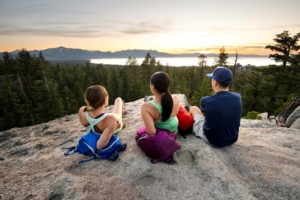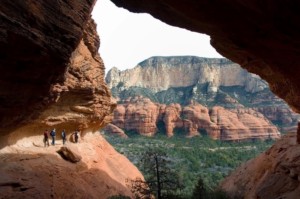Overs & unders: Contrasting destination outcomes during COVID-19
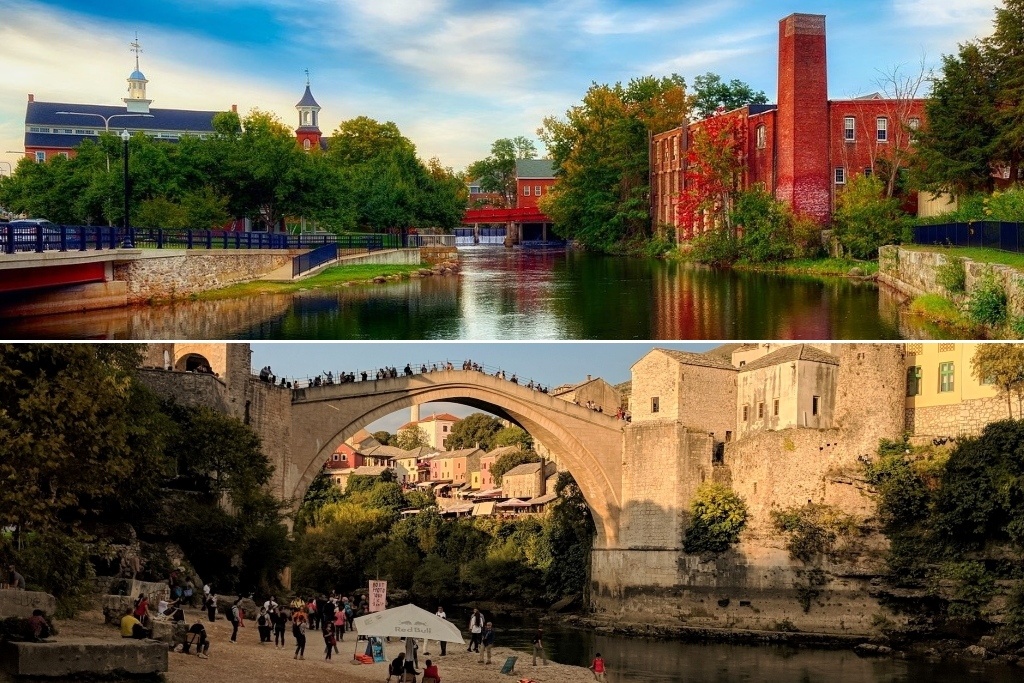
Places that rely on travel & tourism are located all over the world, in nations at different stages of economic development and often vastly different population sizes. When international travel shuts down it is no wonder then that they have different experiences. Development specialist Jada Lindblom compares two destinations close to her heart in this “Good Tourism” Insight.
“GT” Insight Partner Second Look Worldwide invited Dr Lindblom to share her thoughts.
Prior to the COVID-19 pandemic many discussions of tourism and sustainability tended to involve the topic of overtourism. As international travel became accessible to more people, and as destinations that used to be “off-the-beaten-path” became better known via Instagram, YouTube, and other social media, overtourism became a problem for many more destinations.
In the USA, the COVID-19 pandemic has created a roller coaster ride of visitation highs and lows for many places. While tourism in cities generally decreased, many rural and nature-based destinations experienced greater-than-ever demand from cabin-fevered visitors flocking to trails, beaches, pick-your-own farms, and other outdoor attractions.
For tourism-dependent destinations with no domestic markets to fall back on, however, COVID-19 has produced nothing but a slippery slide.
New Hampshire, USA: Overtourism in places
As I write this in early June 2021 from my home in New Hampshire, our state is gearing up for what is expected to be a very busy tourism season full of opportunity. People from across northeastern USA are eager to enjoy the summer sun on the lakes and in the mountains, reunite with friends and families for gatherings and events, and take advantage of the state’s (currently) less-restrictive masking laws.
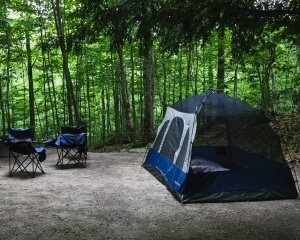
Vacancies and availability are difficult to find for campground spots, boat rentals, and hotel rooms. And for smaller towns that have typically not been the centre of tourism activity but have ambitions to grow this side of their economy, visitor spillover from nearby tourist regions may help put them on the map.
A very busy but also a very challenging summer is in store for New Hampshire. While beach and trailhead parking lots are expected to regularly overflow, resorts and other tourism and hospitality businesses report being woefully understaffed due to international worker visa restrictions.
This picture is very different than what many other destinations globally are presently facing. While some communities that experienced pre-pandemic overtourism may be enjoying the extra breathing room offered by fewer visitors, it is important to remember that many global tourism destinations don’t have a large and prosperous domestic market to rely upon when international borders close.
Also see Carol Chaplin’s “GT” Insight
“Overtourism to no tourism and back: What is the ‘new normal’?”
Overtourism, thankfully, is not the global norm. Looking across destinations’ pre-pandemic situations, there were plenty that still welcomed visitors with open arms and viewed tourism as a pathway for economic growth and enhanced social opportunities. Yes, many of these places are at risk of overtourism. And many communities have learned that visitation can spike overnight and that unsustainable levels can be reached very quickly. Nevertheless, it is encouraging that they still see tourism as a force for good. Encouraging too is that travellers are increasingly empowered to research potential destinations, consider alternatives to popular spots, and direct their attention towards places that want to grow their tourism economies.
Undertourism in Mostar, Bosnia and Herzegovina
Just before the onset of the pandemic, I was lucky to spend the autumn of 2019 in beautiful Mostar, Bosnia and Herzegovina, where I conducted dissertation research on resident perceptions of tourism. Mostar has historically been a cultural crossroads. Its striking scenery and famous Stari Most (Old Bridge) have long attracted tourists. However, the city also has a dark side, having experienced devastating destruction during the war of the 1990s. Tourism — as well as social unity within the city’s population — have taken a long time to recover. What I saw was a city that had — at last! — re-established itself as an impressive destination, with ample lodging and dining options, interesting attractions, and perhaps most importantly, friendly and welcoming local people.
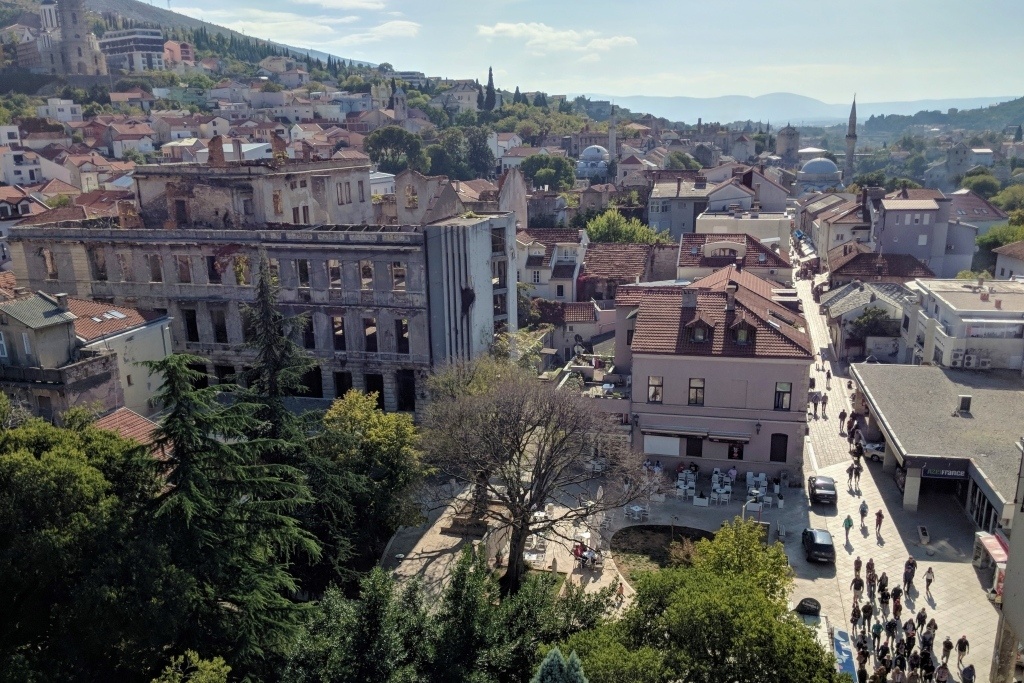
My research findings revealed that the vast majority of residents were supportive of tourism and reported feeling happy, proud, and satisfied seeing tourists coming to their city. Tourism not only created promising economic opportunities for the city and its residents, but also offered means for Bosnia and Herzegovina to gain a new international reputation separate from the lasting stigmas of war.
Several of the residents I interviewed told me that they wanted to participate in the research because they were happy to see a foreigner taking interest in their city. They hoped that my research would help generate more positive word-of-mouth about Mostar as a destination. I assured them that it would be easy for me to speak well of Mostar, as it is undoubtedly one of my favourite places.
My sentiment was not without some concern about overtourism. I was not alone in recognising Mostar’s charms. And I had witnessed the overwhelming tourism boom in nearby Dubrovnik, Croatia, due in part to Game of Thrones’ popularity.
For now at least, any concerns about overtourism in Mostar are forgotten. Exactly a year after my visit — in the autumn of 2020 — the city was at the end of what would have been its normal tourism season. Troublingly, the season simply did not happen. And 2021 isn’t looking much better. Many residents of Mostar depend upon the income from just five or six months of tourism-based work to get them through the year.
Also see Nirmal Shah’s “GT” Insight
“From overtourism to no tourism: What now for conservation?”
As I’ve caught up with friends in Mostar, I’ve heard stories of great frustration. While COVID-19 transmission concerns persist, many residents wish that government policy would now loosen to become more accommodating toward international visitation. In a city that generally appreciates tourism and prides itself upon being welcoming and hospitable, the lack of visitors is widely felt.
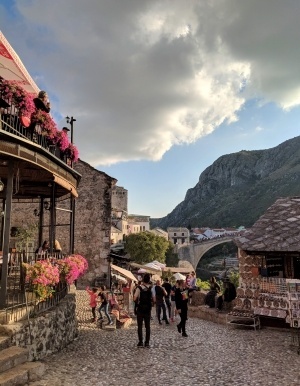
One friend who works in tourism in Mostar recently told me: “I went in a store the other day and the shopkeeper started to speak English with me. She said, ‘I need to practice so I don’t forget.’”
People in Mostar have made great commitments towards building their tourism economy and increasing their visitor appeal. They fear losing momentum due to the pandemic.
Bosnia and Herzegovina has a lot of the same natural and rural features that have made New Hampshire so popular during the pandemic: Lush mountainsides and rocky peaks for hiking, waterfalls for swimming, farms welcoming visitors, quaint villages with bakery cafes, and a small-but-mighty coastline to enjoy fresh-caught seafood dinners.
The key differences are centred around location and access. Even with international travel still limited, New Hampshire can rely on weekend visitors from USA’s northeastern cities, including nearby Boston, Massachusetts. New York City is only 400 kilometres away from Manchester, New Hampshire.
By contrast, Bosnia & Herzegovina’s capital and largest city is Sarajevo, which is home to only half a million people. Mostar’s tourism sector has typically depended upon visitors from a wide range of international origins from as far as China, North America, and Saudi Arabia. Trips from these places tend to involve advanced planning and significant savings. They are not weekend road trips casually embarked upon on a Friday after work, as New Hampshire is for Bostonians.
Time for travellers (and policymakers) to plan
If there is a silver lining for places like Bosnia and Herzegovina, it is that the pandemic has given travellers more time than ever to plan their trips. Aspirations are running high for once-in-a-lifetime vacations and adventure travel. The perceived hurdles of visiting less-conventional locations may not be so daunting now, as travellers have had time to step back and do some research.
As travellers ourselves, we have a chance to ask what it is we loved most about the regional trips we took during the pandemic. Was it trying a new outdoor sport or activity? Was it visiting orchards or vineyards and learning about agricultural traditions? Was it spending time with family members in atypical settings? We also have an opportunity to consider the destinations that may not have previously been on our radar, but which can offer these types of experiences, and more.
Also see Malcolm Roughead’s “GT” Insight
“Scottish tourism plans transformational path to post-COVID recovery”
In a world that was once seemingly overtaken by the phenomenon of overtourism, there are many places, like parts of my home state of New Hampshire, that continue to struggle with it while international borders remain closed. But there are other places, like Mostar, that are excited to once again welcome foreign visitors to share their landscapes, cultures, and heritage.
For every big-name destination you’ve already heard of, there’s likely a little town just down the road or an up-and-coming city just across the ocean with ample attractions and photo-ready moments awaiting those who are willing to put in just a little more time researching their next destination.
What do you think? Share a short anecdote or comment below. Or write a deeper “GT” Insight. The “Good Tourism” Blog welcomes diversity of opinion and perspective about travel & tourism because travel & tourism is everyone’s business.
Featured image (top of post): Overs and unders. The top image is of the Winnipesaukee River in Laconia, New Hampshire, USA. Since the COVID-19 pandemic, parts of Jada Lindblom’s home state have experienced overtourism at times. (1778011 (CC0) via Pixabay.) The bottom image is of Stari Most and the Neretva River in Mostar, Bosnia and Herzegovina. This was taken by Jada Lindblom in the autumn of 2019, before the COVID-19 pandemic effectively shut down tourism in the town. (© Jada Lindblom).
About the author

Jada Lindblom is a community and economic development field specialist for the University of New Hampshire Cooperative Extension and an adjunct instructor at New York University’s Jonathan M. Tisch Center of Hospitality. An advocate for sustainable tourism in New Hampshire, Dr Lindblom encourages visitors to explore her home state’s lesser-known gems and/or plan a trip during the off-peak season.
Thanks to “GT” Insight Partner Second Look Worldwide for inviting Jada.



